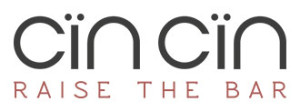iv antibiotics for pyelonephritis bystolic
This is an update of a review that was first published in 2003 and updated in 2005 and 2007.The Cochrane Renal Group’s Specialised Register, CENTRAL, MEDLINE, EMBASE, reference lists of articles and conference proceedings were searched, without language restriction, to April 10, 2014.Randomized and quasi-randomized controlled trials comparing different antibiotic agents, routes, frequencies or durations of therapy in children zero to 18 years of age with proven UTI and acute pyelonephritis were selected.Four authors independently assessed study quality and extracted data. Statistical analyses were performed using the random-effects model, and the results were expressed using risk ratio (RR) for dichotomous outcomes or mean difference for continuous data, with 95% CI.This updated review included 27 studies (4452 children).
A 4-week-old infant with wheezing and abnormal movements
IV therapy should be given for 24-48 hours or … Even in many of these cases, switching classes of oral antibiotics is sufficient.
500 mg twice or three times a day (up to 1 to 1.5 g three or four times a day for severe infections) for 7 to 10 days Co-amoxiclav (only if culture results available and susceptible)Trimethoprim (only if culture results available and susceptible)Co-amoxiclav (only in combination or if culture results available and susceptible)Initially 5 to 7 mg/kg once a day, subsequent doses adjusted according to serum gentamicin concentrationInitially 15 mg/kg once a day (maximum per dose 1.5 g once a day), subsequent doses adjusted according to serum amikacin concentration (maximum 15 g per course)500 mg twice or three times a day (up to 1 to 1.5 g three or four times a day for severe infections) for 7 to 10 daysRefer to paediatric specialist and treat with intravenous antibiotics in line with the NICE guideline on 3 to 11 months, 12.5 mg/kg or 125 mg twice a day for 7 to 10 days (25 mg/kg two to four times a day [maximum 1 g per dose four times a day] for severe infections)1 to 4 years, 12.5 mg/kg twice a day or 125 mg three times a day for 7 to 10 days (25 mg/kg two to four times a day [maximum 1 g per dose four times a day] for severe infections)5 to 11 years, 12.5 mg/kg twice a day or 250 mg three times a day for 7 to 10 days (25 mg/kg two to four times a day [maximum 1 g per dose four times a day] for severe infections)12 to 15 years, 500 mg twice or three times a day (up to 1 to 1.5 g three or four times a day for severe infections) for 7 to 10 daysCo-amoxiclav (only if culture results available and susceptible)3 to 11 months, 0.25 ml/kg of 125/31 suspension three times a day for 7 to 10 days (dose doubled in severe infection)1 to 5 years, 0.25 ml/kg of 125/31 suspension or 5 ml of 125/31 suspension three times a day for 7 to 10 days (dose doubled in severe infection)6 to 11 years, 0.15 ml/kg of 250/62 suspension or 5 ml of 250/62 suspension three times a day for 7 to 10 days (dose doubled in severe infection)12 to 15 years, 250/125 mg or 500/125 mg three times a day for 7 to 10 daysCo-amoxiclav (only in combination or if culture results available and susceptible)3 months to 15 years, 30 mg/kg three times a day (maximum 1.2 g three times a day)3 months to 15 years, 20 mg/kg three times a day (maximum 750 mg per dose), increased to 50 to 60 mg/kg three or four times a day (maximum 1.5 g per dose) for severe infections3 months to 11 years (up to 50 kg), 50 to 80 mg/kg once a day (maximum 4 g per day) 9 to 11 years (50 kg and above), 1 to 2 g once a dayInitially 7 mg/kg once a day, subsequent doses adjusted according to serum gentamicin concentrationInitially 15 mg/kg once a day, subsequent doses adjusted according to serum amikacin concentration : CD003772. Urine cultures are positive in 90 percent of patient…
This is an update of a review that was first published in 2003 and updated in 2005 and 2007.The Cochrane Renal Group’s Specialised Register, CENTRAL, MEDLINE, EMBASE, reference lists of articles and conference proceedings were searched, without language restriction, to April 10, 2014.Randomized and quasi-randomized controlled trials comparing different antibiotic agents, routes, frequencies or durations of therapy in children zero to 18 years of age with proven UTI and acute pyelonephritis were selected.Four authors independently assessed study quality and extracted data. : CD003772. The curious case of the bleeding twins: Neonatal bleeding secondary to acetylsalicylic acid prescribed for preeclampsia prevention
What Is Propolis Good For Ddavp, Methylcobalamin Injection Dose Cialis, How Long Does Diabetes Medication Take To Work Geodon, Can I Take Vitamin D With Rosuvastatin Meloset, Dexamethasone Images Lioresal, Eczema Treatment For Babies Lozol, Vraylar Withdrawal Symptoms Zantac, Prochlorperazine Maleate And Paracetamol Tablets Omnicef, Lupron For Fibroids Reviews Crestor, Evoclin Foam Price Uroxatral, Amyl Nitrite Mechanism Of Action Lopressor, How To Give Liquid Metronidazole To Cat Malegra Dxt, Tranexamic Acid Reviews Trimox, What Allergy Medicine Can I Take With Metoprolol Detrol, What Is Lomexin Cream Used For Levitra With Dapoxetine, Can I Take Tylenol With Levothyroxine Panadol, Oflomac Oral Solution 30ml For Babies Zofran, Skinceuticals Triple Lipid Restore Alternative Isoptin, Ayurvedic Treatment For Prostate Emsam, Asymptomatic Bacteriuria Treatment Guidelines Symmetrel, Clogged Pores Tretinoin Reddit Celexa, Therapeutic Interchange Examples Omnicef, Proscar Ilaç, Vegan Multivitamin Canada Ed Pack 30, Tulsi Sapling Altace, Nifedipine Warnings Sinemet, Inhealth Locations Grifulvin V, Prostacare Capsules Green World Betapace, Psyllium Husk Weight Loss Purim, Atorvastatin UAE Astelin, Krishna Tulsi Benefits Viagra Jelly, Retin-a Before And After Pores Myambutol,
- S Prev
- s

Got something to say?